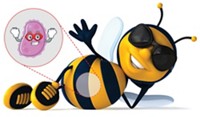Advertisement
Grab your lab coat. Let's get started
Welcome!
Welcome!
Create an account below to get 6 C&EN articles per month, receive newsletters and more - all free.
It seems this is your first time logging in online. Please enter the following information to continue.
As an ACS member you automatically get access to this site. All we need is few more details to create your reading experience.
Not you? Sign in with a different account.
Not you? Sign in with a different account.
ERROR 1
ERROR 1
ERROR 2
ERROR 2
ERROR 2
ERROR 2
ERROR 2
Password and Confirm password must match.
If you have an ACS member number, please enter it here so we can link this account to your membership. (optional)
ERROR 2
ACS values your privacy. By submitting your information, you are gaining access to C&EN and subscribing to our weekly newsletter. We use the information you provide to make your reading experience better, and we will never sell your data to third party members.
Education
Newscripts
Last Year's Top 10 New Species
by Michael Torrice
June 13, 2011
| A version of this story appeared in
Volume 89, Issue 24
People have imagined some pretty strange creatures living on both real and fictional planets: for example, little green men from the Milky Way and tall, hairy Wookiees from a galaxy far, far away. But life here on Earth is sometimes just as fantastic.
In May, a committee of taxonomists highlighted OUR PLANET'S BIODIVERSITY by announcing the top 10 new species discovered in 2010. The list includes a flatfish that hops along the bottom of the Gulf of Mexico with its fins, a spider that spins webs spanning rivers 80 feet wide, and a bacterium that feeds on the rusted hull of the R.M.S. Titanic.
The International Institute for Species Exploration at Arizona State University started the annual list in 2008 to celebrate the birthday of Carl Linnaeus, the father of modern taxonomy. “Scientists tend to be too straitlaced sometimes,” says Mary Liz Jameson, a biodiversity scientist at Wichita State University and chair of the selection committee. “The top 10 lets us take off our lab coats and have fun.”

Picking just 10 species can be tough, Jameson says, because scientists characterize about 10,000 new organisms each year. Fortunately, the committee has help: Scientists and the public can nominate their favorite species online. This year, the committee selected the top 10 from about 40 nominees.
Sometimes a clever name gives a new species an edge over its competitors in the selection process, Jameson says. For instance, the name of one winner this year, Tyrannobdella rex, means “tyrant leech king.” Scientists found this leech inside the nose of a nine-year-old girl living in a remote region of Peru. It belongs to a family of leeches that feed while attached to the mucus membranes of mammals, instead of latching on to their skin. When it’s dinnertime, this T. rex bites its host with a row of teeth that are eight times as large as those of any other leech, says Mark E. Siddall of the American Museum of Natural History, in New York City, who characterized the critter.
Although the committee members weren’t surprised that a 40-mm-long leech went undiscovered until 2010, they were shocked that a 6-foot-long monitor lizard with golden spots eluded scientists for so many years. This fruit-eating lizard, Varanus bitatawa, lives in the forests of the northern Philippines. Even though scientists had been oblivious to the lizard’s existence, indigenous people on the island have hunted and eaten it for generations.
Luke J. Welton of the University of Kansas and his colleagues characterized the first adult specimen after spotting a hunter carrying it through the forest. Welton thinks the species evaded detection because of its reclusive behavior. “It tends to spend vast amounts of time up in the forest canopy away from prying eyes,” he says.
Meanwhile, the bioluminescent fungus Mycena luxaeterna relishes the limelight. The stalks of its mushrooms glow constantly through a gooey coating while it decomposes dead trees and leaves on the floor of forests on Brazil’s eastern coast. Dennis E. Desjardin of San Francisco State University and his colleagues discovered this species as part of a dec adelong survey of bioluminescent fungi.
The researchers hunted for the luminous mushrooms without flashlights on moonless nights, stumbling around jaguar-filled forests in pitch-blackness. “So it’s a bit dangerous but a hell of a lot of fun,” Desjardin says. “It’s just a kick in the pants.” With the help of chemist Cassius V. Stevani of the University of São Paulo, Desjardin’s team has determined that the fungi produce light through a biochemical pathway similar to the one in fireflies based on the enzyme luciferase.
Desjardin and the other scientists who reported 2010’s new species hope the list will excite the public and raise awareness about the need to characterize unknown critters across the globe. “We have a lot of exploration left to do,” Wichita State’s Jameson says. “Not just on the moon or on Mars, but also here on Earth.”





Join the conversation
Contact the reporter
Submit a Letter to the Editor for publication
Engage with us on Twitter